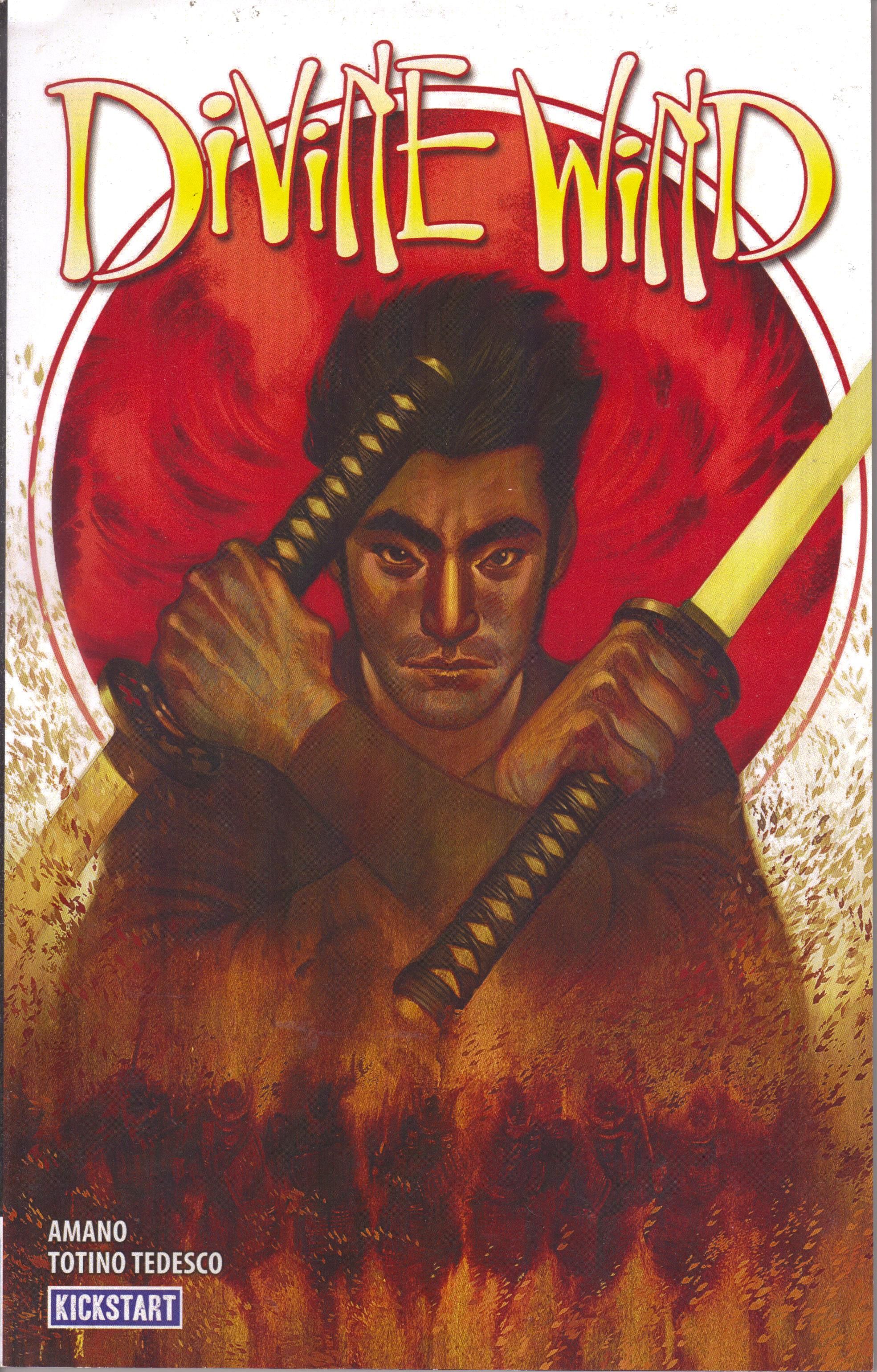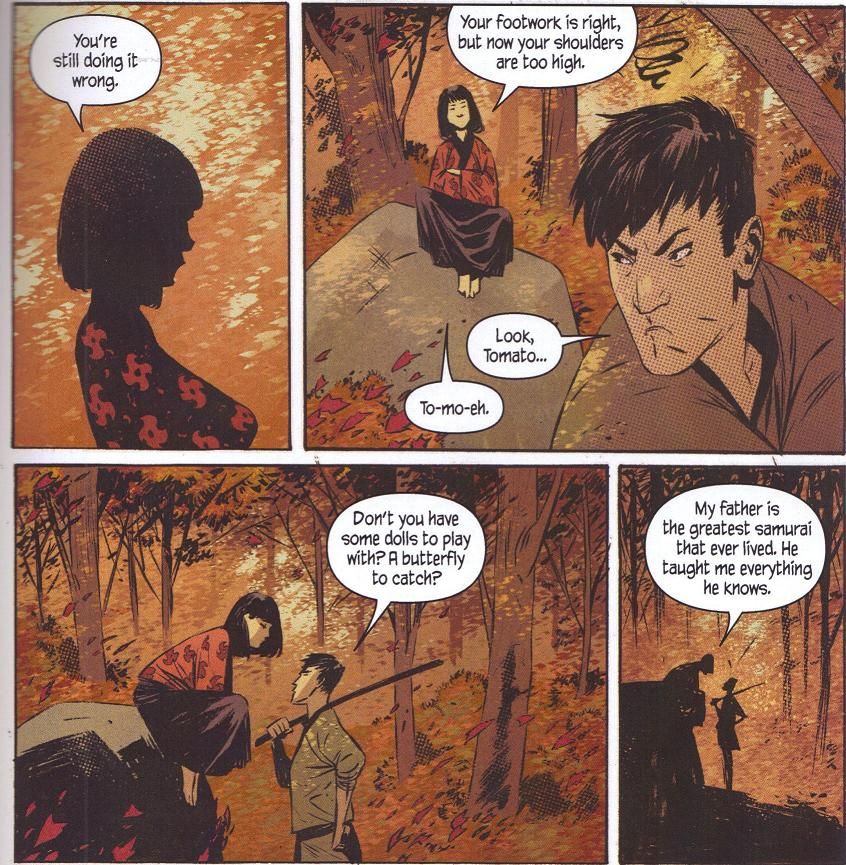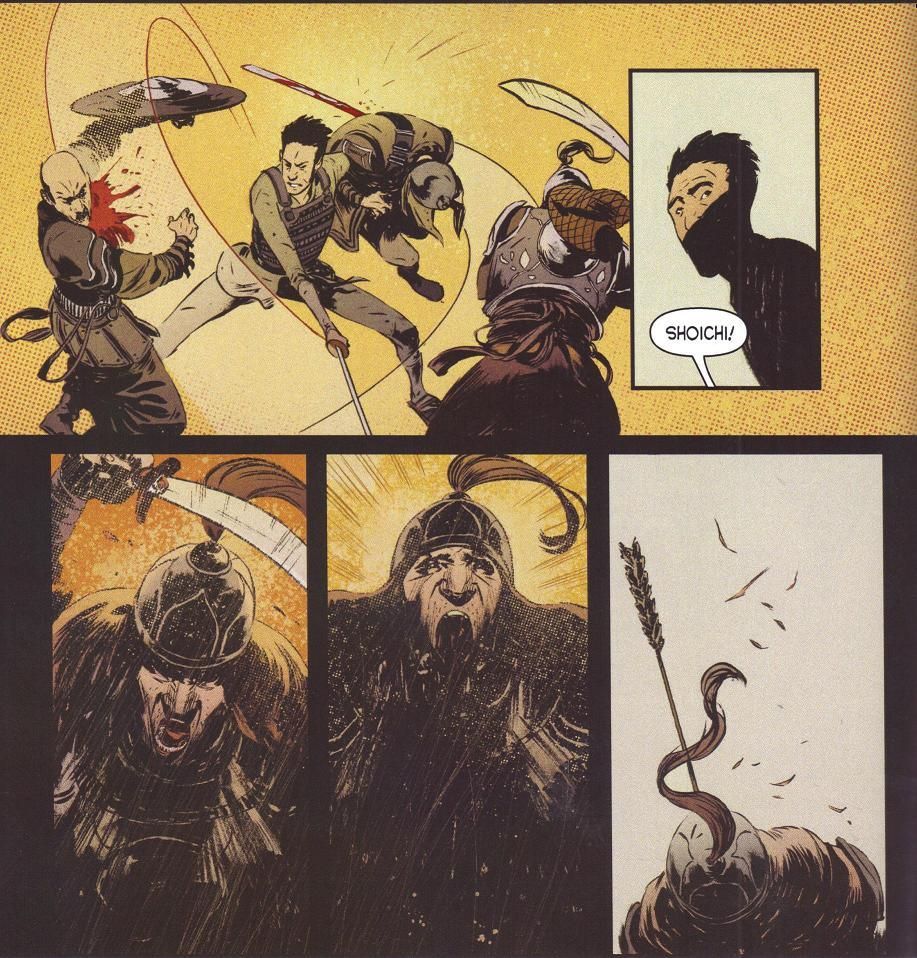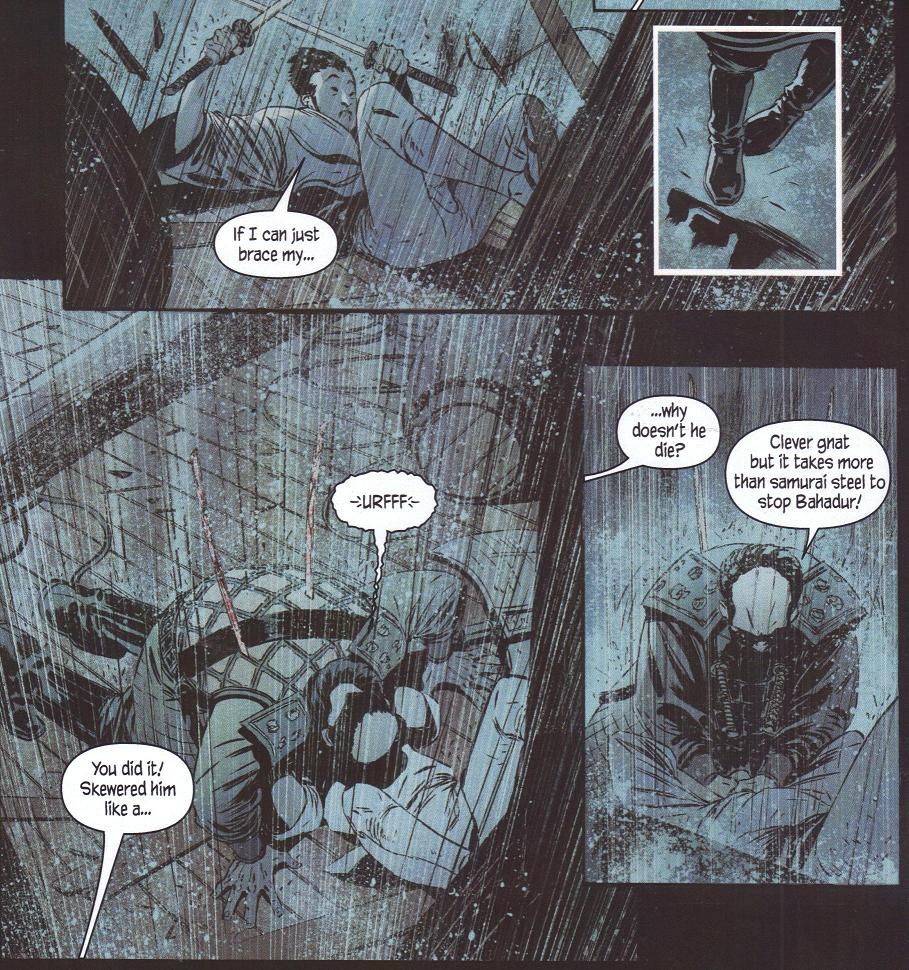No, this is not about a god farting! Come on, people, get your minds out of the gutter!
Kickstart Comics is a nice little company, offering slim volumes of standalone graphic novels (this one is 80 pages long) by some nice talent. I don't know if they're doing well, but I hope they are, because the comics I've gotten from them have all been pretty decent.
Only a few have been really, really good, but they've all been pretty decent. Divine Wind is their latest offering, and it's one of the better ones. Jeff Amano, who must know a thing or two about Japan because he likes writing about it (and he's Asian, so that might have something to do with it) gives us a decent story, but the real reason I bought this is because Julian Totino Tedesco drew it. I've liked Tedesco's art since I first saw it, and he's one of those dudes that I will try to follow whatever he's doing. Obviously, if he starts drawing Marvel books that I don't like, that might put a strain on my loyalty, but for now, it's fun to watch his development. Bill Tortolini lettered this book, by the way, and it costs a mere $8.99. Yay, value!
Amano's story is about the Mongol invasion of Japan, in case you haven't guessed. Early on, we're in 1274, and the Mongols have been driven away from Japan and their ships sunk in a violent typhoon. This is the first instance of the "divine wind" - the kamikaze - saving Japan, but the Japanese know that Kublai Khan, the Mongol emperor, will return because his desire for conquest will never be quenched. So they build a wall at the most likely landing point and the shogun decides to allow anyone to become a samurai, even (yuck) commoners. The main character, Shoichi, is the son of a fisherman, but he longs to become a samurai.
Tomoe, the daughter of the great samurai Tametomo, is another outsider who wants to fight - she's a very good archer, and of course she manages to join the mission that the Japanese hope will end the Mongol threat. Amano might not be historically accurate with that, but at least he makes it clear that even someone like Shoichi, who believes that he can be a samurai, doesn't think a girl can be a warrior. In 1281, the Mongols attack again, and of course the Japanese prevail, but Amano still manages to make things suspenseful. The divide between older samurai and new ones like Shoichi makes for fine drama, and Amano plays it up well, making Shoichi and his nemesis represent a break in military tactics, as the Japanese need to adapt to defeat the Mongols a second time. Amano doesn't do too much with the Mongols - they're almost mustache-twirling villains, from the bloated Kublai Khan to the general who actually wears an eye patch, but they have just enough personality to make the battle seem hopelessly stacked against the Japanese. Everyone ought to know that the Japanese win, and several other plot points resolve exactly how we think they're going to, but Divine Wind is never boring, and that's something. Plus, Amano does at least get several nice historical points correct, such as the way the Mongols were forced to construct their navy, which wasn't too smart. It's an exciting historical adventure, and those are always fun to read.
Tedesco, of course, is a very good reason to get this book, and he doesn't disappoint. He has a nice, slightly cartoony style that helps him make some of the caricatures of the characters (like Kublai Khan) more in tune with the rest of the art, but his heavy inks and dull colors (not in a bad way) ground the art more.
He varies his brush strokes, too, so that some parts of the art are more ethereal than others, which also helps ground the art. His depictions of the storms that destroy the Mongol fleets are amazing, and he draws nice action scenes too. Tedesco is an artist who doesn't need to overdo the linework to suggest a great deal, which helps him when he's obscuring some of the scenes with heavy rains, because we can still read what's happening even though Tedesco deliberately eases up on the specific linework. He also uses Zip-A-Tone (or, if there's a digital equivalent, he uses that), which helps add a nice rough texture to the artwork. This really is a beautiful comic, and Tedesco helps make Amano's story more interesting than it would be with a lesser artist.
All in all, I Recommend Divine Wind not because Amano's story is so very good, but because it's interesting and exciting and it tells a story not many people know, and Tedesco draws it superbly. It's a nice, cheap book that's far more entertaining than most 2-3 issues of a DC or Marvel comic (not all, but most), so why not save your ducats and pick it up? I don't think you'll regret it.





